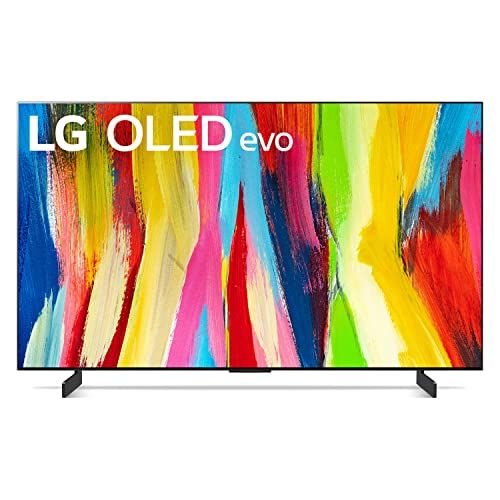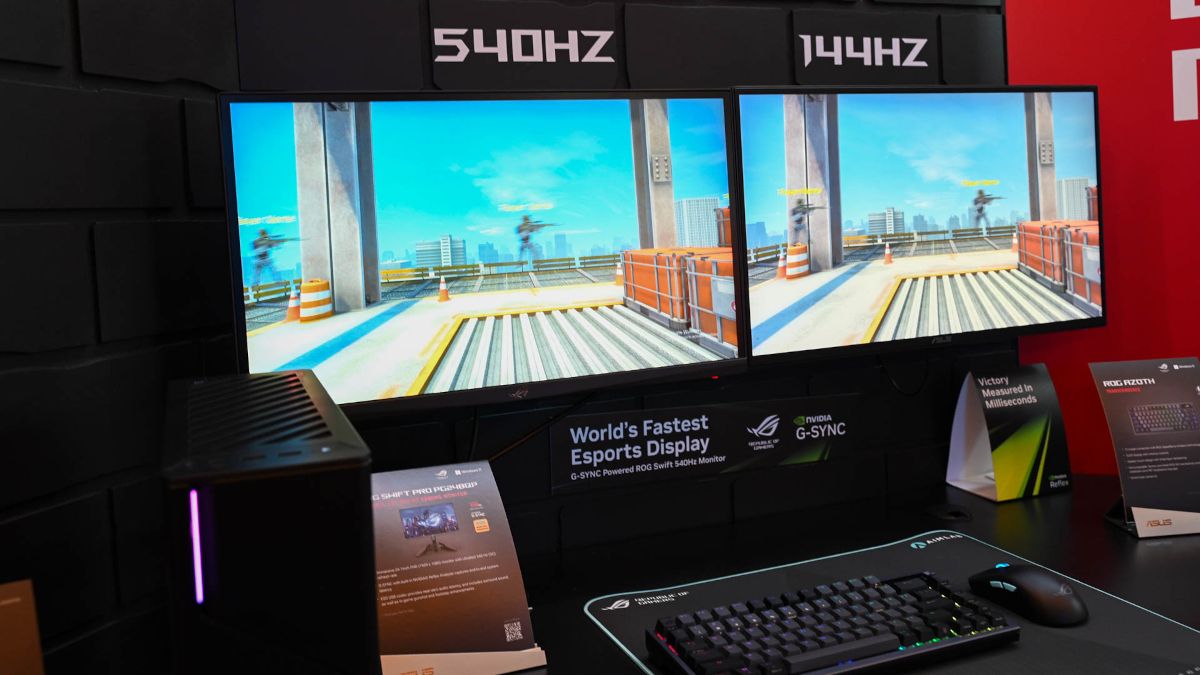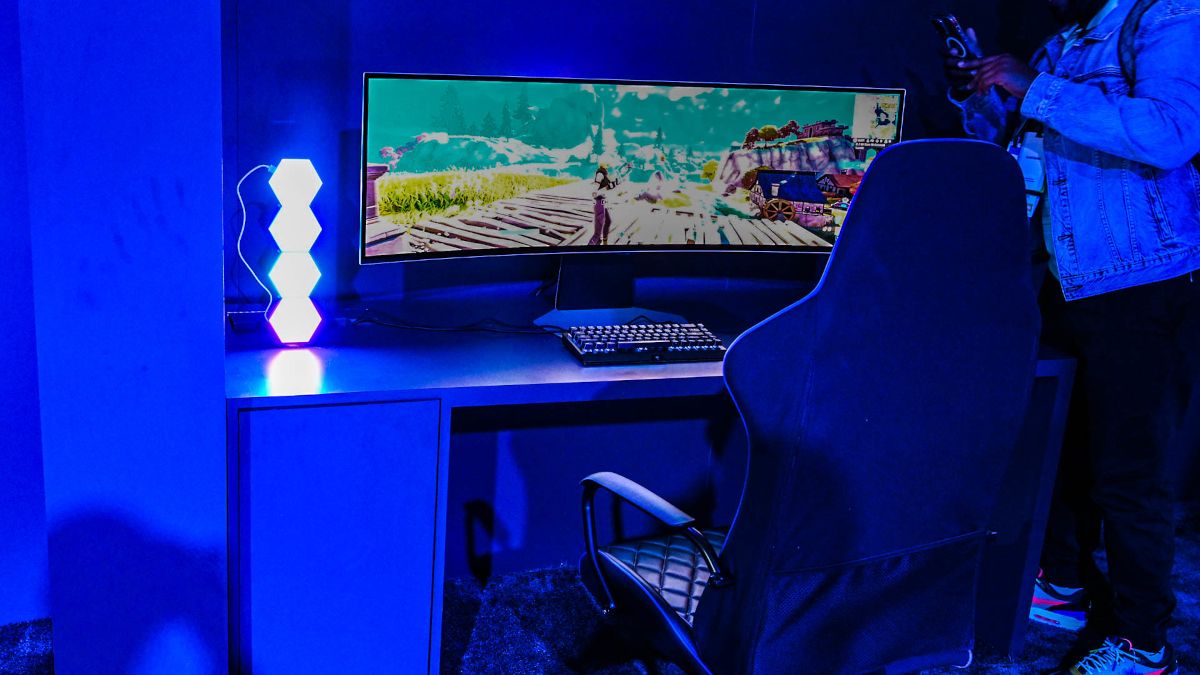Quick Links
If CES 2023 had one clear message, it's that the age of the OLED PC monitor is finally here. The question is whether it's time to upgrade your LED gaming monitor or even the OLED TV you're secretly using for a monitor.
What's the Big Deal With OLED Monitors?
To some, it may seem like OLED monitors aren't particularly big news. After all, laptops with OLED screens have been around for a while, and OLED TVs like LG's C2 seem made with PCs in mind, thanks to features like G-Sync support.

LG 42-Inch Class OLED evo C2
The 42-inch C2 is an affordable OLED at a perfect size for a monitor, supporting the latest variable refresh technologies for gaming, and offering all the benefits of OLED, provided you can put some distance between yourself and the display.
However, PC monitors have a few advantages over both built-in laptop monitors and TVs. The first is size. Unless you're actually away from your desk, laptop screens are too small for comfortable work. OLED TVs on the other hand, are almost always too big to use on a desk. They're fine for some gaming with a little distance from the screen, but for everything else you're in for a sore neck.
PC monitors fill that goldilocks zone of sizes just right for sitting at a desk with a keyboard and mouse. That means a 27-inch OLED monitor such as the ASUS ROG Swift OLED PG27AQDM will appeal to a huge number of gamers who consider 27 inches the upper limit of optimal screen size.
Apart from size, resolution and refresh rate are also much more flexible in the world of PC monitors. There are no 1440p OLED TVs and even high-end OLED TVs are limited to 120Hz refresh rate. The aforementioned ASUS screen boasts a 240Hz refresh rate and 1440p resolution. The majority of PC gamers don't have a GPU capable of driving high frame rates on a 4K display, which is the only resolution choice you have with televisions, unless you step all the way down to 1080p.
Finally, having an OLED in PC monitor form means getting access to all the aspect ratios that aren't 16:9 widescreen. Take the 49-inch Odyssey OLED G95SC Samsung announced at CES 2023, which offers a 5120×1440 resolution (that's 32:9) at 240Hz. This is much more immersive than a 42" OLED TV on your desk and more useful for productivity.
What About Image Retention?
Using OLED technology for PC monitors has long been seen as a bad idea thanks to OLED's tendency to exhibit image retention. However, image retention isn't the problem it was in the early days of OLEDs anymore. Even the budget OLED panel in the Nintendo Switch has stood up to immense deliberate abuse for over 7,000 hours without significant image retention.
So, although it's impossible to know just yet, we expect none of these monitor manufacturers would release OLED PC monitors if they weren't confident that the image retention issue was solved well enough for mainstream PC use. Whether their confidence is warranted is another question entirely, and only time will tell. Still, it's a great excuse to start using screen savers again.
OLED Isn't the Only Game in Town
OLED is widely considered the gold standard for overall image quality these days, with perfect black levels, high contrast, and popping colors. However, that doesn't mean there aren't other technologies that can get close at lower prices.
In particular, Mini LED is emerging as a display technology that can approach the image quality of OLED, but at much lower prices. This technology has already impressed in devices like the 12.9-inch iPad Pro M1 and M2 tablets but is still relatively rare as a desktop monitor or television technology.
Mini LED, as the name suggests, uses an array of tiny LED backlights arranged into thousands of "dimming zones" to improve black reproduction and contrast. This is demonstrated to great effect by the monstrous Samsung Odyssey Neo G9.
This 57-inch super ultrawide Mini LED monitor has a resolution of 7680x2160. While this monitor is unlikely to be cheap in absolute terms, an OLED monitor with the same specifications would have a truly astronomical price tag.
To OLED or Not to OLED?
Assuming that you have the budget to be an early adopter of PC OLED monitors, should you? With money being no object, it seems like an obvious upgrade. An OLED monitor is almost certainly better than whatever LCD monitor you're currently using, and the monitor is the part of your computer you spend the most time staring at, so you'll get instant returns on your investment.
If budget is a consideration at all, it's probably better to wait for more Mini LED monitors to hit the market. You'll still get an immense visual upgrade without downgrading your bank balance quite as much.
In the medium term, however, as OLED monitors experience the same price decreases that we've seen in the OLED TV market over the years, it will be very difficult to rationalize not taking the leap.


